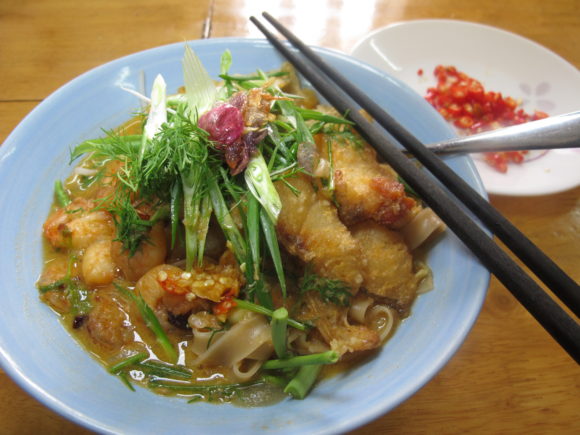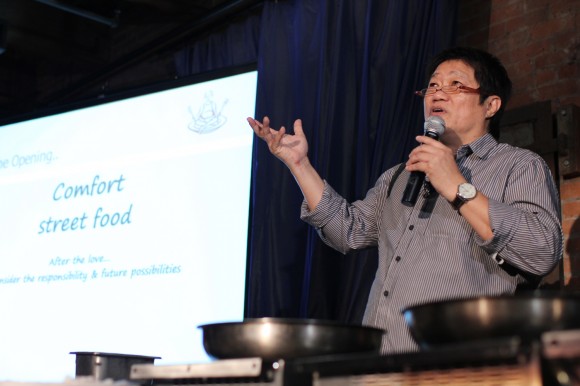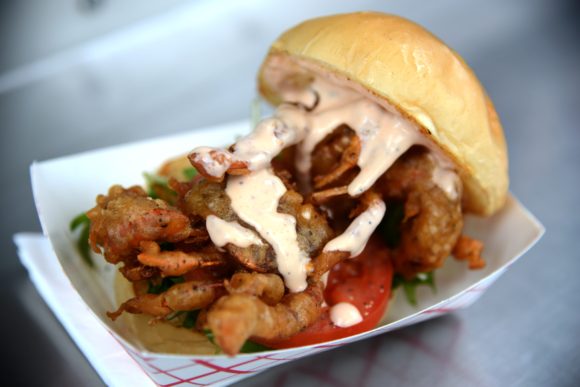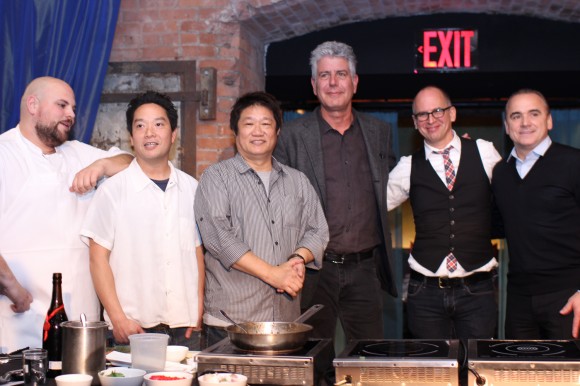By Jessica Colley

When K.F. Seetoh looks at a plate of satay, he doesn’t just see culturally expressive, delicious food—he sees opportunities.
This perspective sparked the conception of the World Street Food Congress, a 10-day celebration of vibrant street food culture around the globe. Chefs, restaurateurs, and food enthusiasts will gather for the inaugural event in Singapore from May 31 through June 9, 2013 to feast, jumpstart a dialogue on the impact of street food on jobs, society, and education, and honor talented street food artisans through an awards ceremony.
“What do chefs like to eat?” Anthony Bourdain asked recently at a press conference announcing details on the first-ever World Street Food Congress. “There is a gravity that pushes chefs towards street food. Every bite tells you something about who cooked it and where they come from.” Bourdain is an enthusiastic voice in the World Street Food Council, along with James Oseland, Editor-in-Chief of Saveur, Jean-Georges Vongerichten, Chef and Owner of Spice Market, and other prominent industry names. All share Seetoh’s vision that street food is about more than nourishment and taste—and it’s about time we start talking about the opportunities that exist within this thriving culture.
Beyond the gastronomical feast that will gather 40 of the world’s best hawkers at the World Street Food Jamboree, this event intends both to teach and ask questions. Attendees will learn about street food heritage and about what type of role they can play in the conservation of food cultures. The council seeks to both professionalize the industry and to expose new possibilities for growth through a gathering of minds enthusiastic about the power of affordable, community-driven street food.
Council members inspired interest in the event by sharing vivid stories of how street food impacted their lives. James Oseland painted a vivid picture of Jakarta where he first encountered a swarm of satay vendors, carrying small grills on their backs to set up shop. Bourdain described the possibility in, “a tire rim and few charcoals,” and noted the need in a hard-working, short-on-time society for, “food that can be prepared cheap and fast.” In a world where many food enthusiasts are priced out of certain experiences, Bourdain praised street food for its democratic nature, pointing out that, “street food makes delicious food available to everyone—regardless of income.”
In addition to a shared love of all things finger food and hot-off-the-grill, these council members are joining forces to start a dialogue about how a movement by the people and for the people can continue to grow and shape everything from society to new business ventures. This passionate group is asking an important question: how do we take something so beloved and delicious—and ensure it has the widest, most positive impact possible? 
The most “unstructured culinary culture in the world” now has a team of advocates seeking to explore and articulate the potential in the global tradition of street food.


